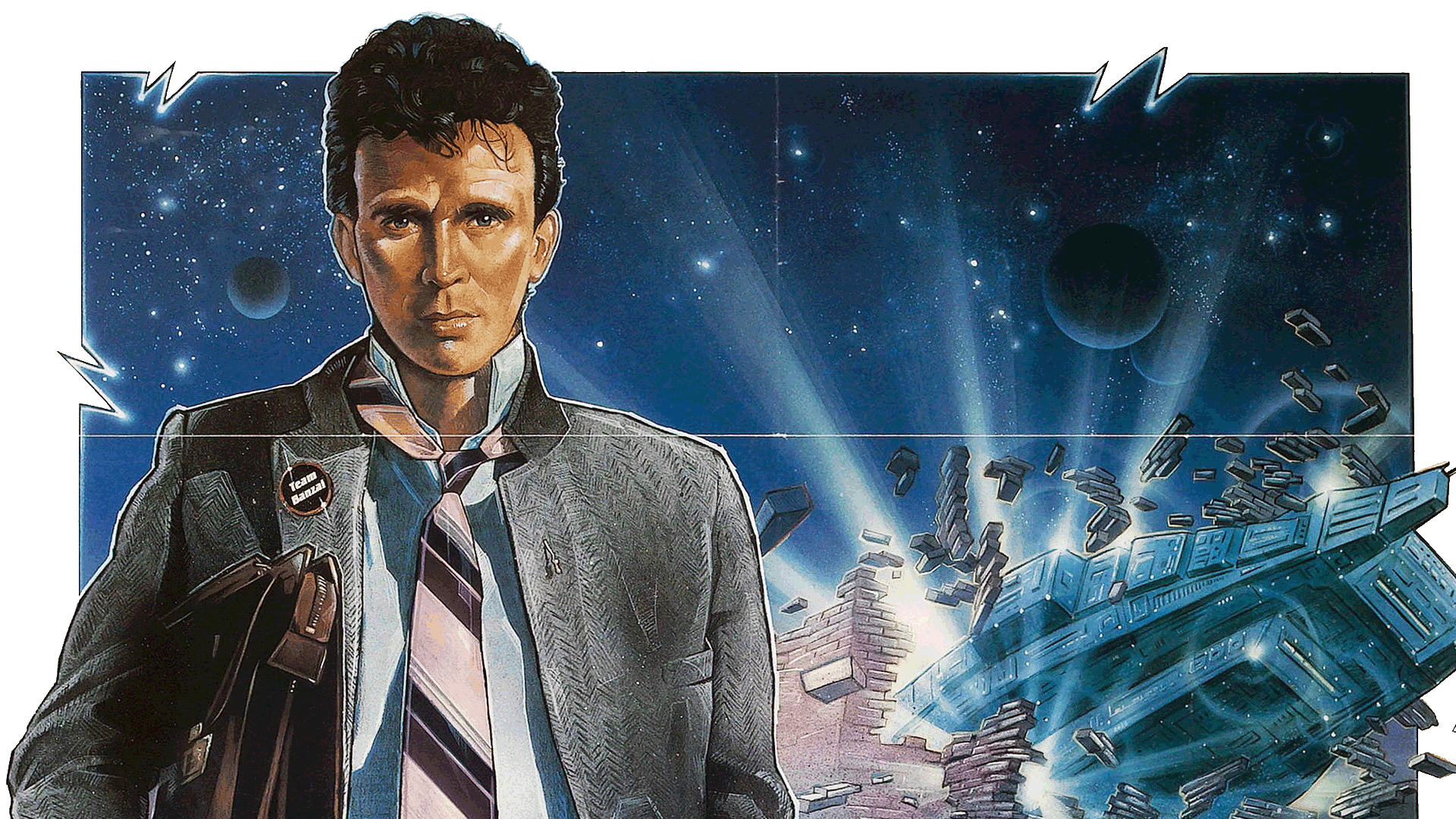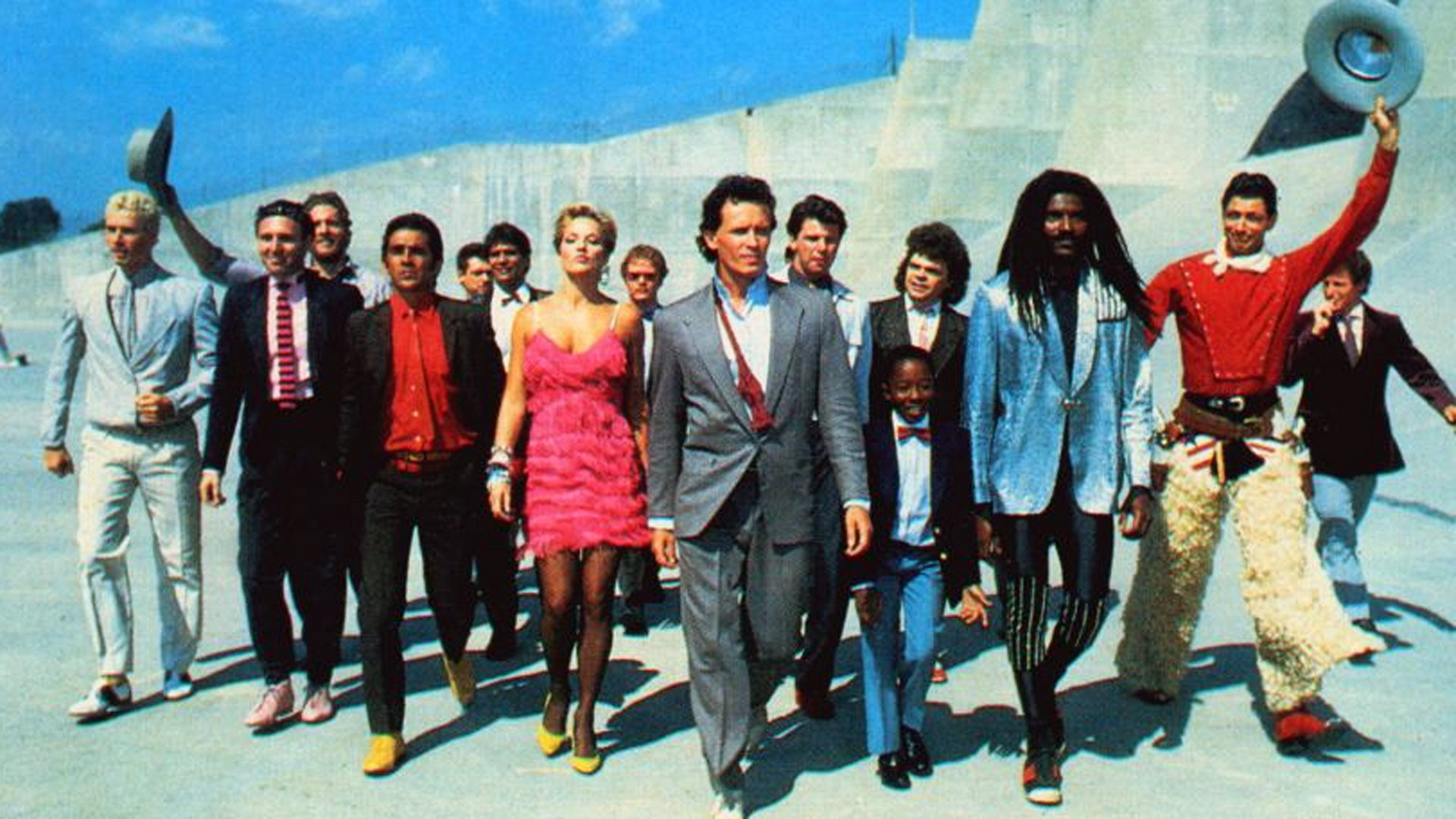
Dr. Buckaroo Banzai – D20 NPC
One of the 80’s best cult movies stared Peter Weller as Dr. Buckaroo Banzai. The movies’ popularity has never quite been enough to deliver the promised for sequel, but a set of comic books provide more character development for Dr. Buckaroo Banzai and Team Banzai in general. Dr. Banzai makes a great NPC to introduce to any D20 Modern game.
Buckaroo Banzai Character Sheet

Encounter Suggestions:
– Team Banzai is investigating the same strange object the character are
– PCs are brought in on a top secret government project, headed by Dr. Buckaroo Banzai
– A Blue Blaze Irregular has disappeared under mysterious circumstances. Dr. Banzai can not investigate personally, but engages the characters to investigate.
From World Watch Online;
Buckaroo Banzai was born in the winter of 1950 in London, the son of two scientists: Masado Banzai, a brilliant Japanese research physicist whose work in theoretical quantum mechanics is reported to have “rattled” Einstein, and Sandra Willoughby, the daughter of the eccentric Scottish-born Texas mathematician Edward McKay Willoughby. Sandra Willoughby fell in love with Masado Banzai when she was sixteen and married him twelve years later, after becoming an expert in her own right in the field of negative mass propulsion. The couple fled Japan at the outbreak of World War II and eventually settled in Texas. Their son grew up in Colorado and Arizona and was named “Buckaroo” because of his father’s love for the American West.
In 1946 Masado Banzai and Sandra Willoughby joined forces with Masado’s old friend and colleague, Professor Toichi Hikita, who shared their belief that one day man would be able to pass unharmed through solid matter. Their researches culminated in 1953 in the Texas desert, when Dr. Banzai took controls of a jet car equipped with an early version of the Oscillation Overthruster. But the experiment ended tragically: Buckaroo Banzai’s parents were killed in an explosion as the four-year-old child looked on. Hikita raised young Buckaroo, using the entire world as his classroom, and the boy grew up to be, among other things, an extraordinarily skilled neurosurgeon.
“Dissatisfied with a life devoted exclusively to medicine,” (film’s director W.D.) Richter writes, “Buckaroo Banzai perfected a wide range of skills. He designed and drove high-powered automobiles. He studied bujitsu and particle physics. His skill with a sixgun was reputed to eclipse that of Wyatt Earp. He spoke a dozen languages and wrote songs in all of them. His band, the Hong Kong Cavaliers, was one of the most popular, hard-rocking bar bands in east Jersey, though it’s members were not professional musicians at all but rather cartographers and botanists, linguists and propellant engineers, an entomologist and an epidemiologist. All of these experts in the oddest fields of endeavor were drawn to Buckaroo, and all of them came and went like the wind on the prairie – Rawhide, Reno, the Swede, Perfect Tommy, Big Norse, Pecos.”
Descriptions of Buckaroo Banzai are rare, but in Buckaroo Banzai, Reno recalls his first meeting with him as follows: “I have always found it remarkable how a confident and open person can make a strong lasting impression in the space of a single moment, but that was just what I found to be the case with B.Banzai. A ready smile and a firm handshake attached to a body that seemed to be made entirely of sinew captivated me immediately. I suggested that we walk outside , and he agreed.
“In the sunshine his face is smooth, unmarked. A smile plays constantly around his lips, but his eyes are deep and thoughtful, of an unusual color I cannot readily describe. Neither can I recall who spoke first, a phenomenon I have found common among others when they have been asked to recall their first encounters with the man. I tend to believe it is the eyes, of such an unusual hue and hypnotic intensity that they could make one believe almost anything. In short, within the first minute of our meeting I believe I had decided to follow him anywhere with the slightest hesitation.”
Later in his book, still recalling that first meeting when he was inducted into the Cavaliers, Reno adds this observation: “Buckaroo, like most true geniuses, was utterly without arrogance, a simple man in the best sense of the word. Decency towards others was not something he had to work at; it was as involuntary with him as breathing. On the other hand, I have seen him an hour after killing a man and found him to be perfectly composed.” The contradiction, Reno concludes, is apparent only to the Western mind.
Precious light is shed on the mystery of the man’s personality by the following laconic note, which is apparently the only time Dr. Banzai has discussed himself in print:
“It was quite by chance that I became involved in scientific investigation and began to study the psychology of crime. Although I was born in London during a visit of my parents to England, I spent my early days on the vast ranges of Colorado and Arizona and there was taught how to ride and shoot by the red-skinned Sioux warriors, who strangely seemed to enjoy showing an Amerasian boy their tricks. Until I was fourteen I went to school in Denver and later I continued my education in Massachusetts, Texas, and England, taking my medical degree from Harvard. In this way a love of travel and the craving for excitement and danger were stimulated in me from childhood.
“After my first introduction in Monte Carlo to the forces which wage unceasing warfare against the shadowy underworld of crime, I realized that in their ranks was a possibility of escaping from the dreaded monotony of a life of routine.
-Buckaroo Banzai”
Other notes:
Saw his parents killed in their jetcar attempt.
Proposed to Peggy Simpson on the bank of the Thames River while at Merton College, Oxford. A fall wedding in New York was planned. She was murdered on their wedding day by agents of the evil Hanoi Xan.
Met Sidney Zwibel at Columbia P&S, where they shared Thornburg’s histology class and, later, an enzymology class.
Has written numerous tomes on science and philosophy, including Beyond the Realm of Atomic Particles and Massless Photons and Future History (co-authored with Prof. Hikita).
Equipment:
Colt Peacemaker (aka Single Action Army)
.45 Colt caliber, 6 round
4 3/4 inch barrel
Brass Frame
(Note: Pg. 161-2 of the Book quotes Reno as saying “They were the Navy Colts he used only when going in search of Hanoi Xan, massive heavy pistols which had belonged to his father.”)
Katana
Guitar:
Fender Stratocaster, blond body with Maple neck
